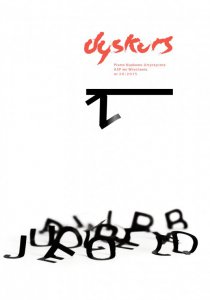Literatura. Film. (Szkic o powinowactwie)
LITERATURE. FILM. (Draft affinity)
Author(s): Stefan CzyżewskiSubject(s): Language and Literature Studies, Literary Texts, Fine Arts / Performing Arts
Published by: Akademia Sztuk Pięknych im. Eugeniusza Gepperta we Wrocławiu
Keywords: GESAMTKUNSTWERK; AFFINITY ART;, WORD AND IMAGE; THE LITERARY IMAGE AND THE FILM IMAGE; ADAPTATION
Summary/Abstract: The affinity of film and literature is analyzed in historical perspective,and more broadly, the methodological aspect of comparing and collatingtogether ‘word and image’ ...Recalling the historical aspect, it is easy to find in the sources certain awkwardnessof humanistic reflection on not only the relationship betweenthe arts, but especially the division and classification of ‘disciplines of art’.Ancient thinkers tried to resolve this issue citing nine muses, who tookcare of the individual disciplines. Taxonomy is relevant only in its historicalcontext, because understanding of art and science in those days wascompletely different from the present. Despite this fact, modern thinkersrevised the system many times while different creating taxonomies andintroducing other divisions. Cinema was considered as the Tenth Muse theearly twentieth century, but that decision was only symbolic.It seems more appropriate to place the relationship of film and literaturein the perspective of coexistence of words and images, whose affinityhas been obvious in Mediterranean culture in last two thousand years. Itmanifests itself mainly through painting illustrations of literary topics.However, the temporary nature of perception of both film and literature,seems more appropriate an arena to compare film and literature. Separationof different material in these disciplines is possible. It entails theformation of the perspective of perception of temporary narrative structures,dramatic and semantic, as perception systems common to film andliterature. The categories of the moving image and literary image areconsidered as helpful in detailed analysis.The text ignores the problem of film adaptation of literary works andtypical inter-semiotic issues, because of its special affinity and marginal.
Journal: DYSKURS Pismo Naukowo-Artystyczne ASP we Wrocławiu
- Issue Year: 2016
- Issue No: 1 (20)
- Page Range: 212-243
- Page Count: 32
- Language: Polish

